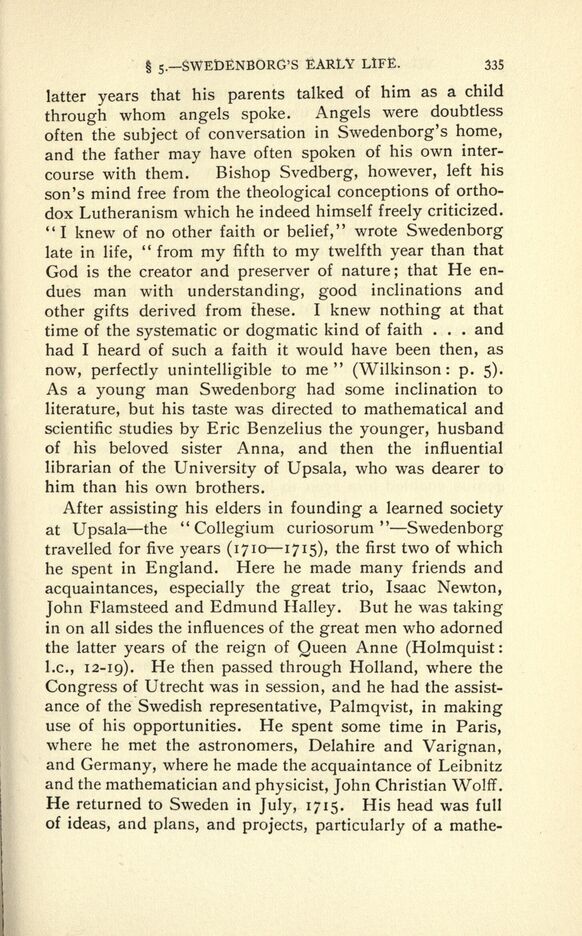
Full resolution (JPEG) - On this page / på denna sida - VII. The Church in the “Time of Freedom” and Period of Neology (1718—1811 A.D.)

<< prev. page << föreg. sida << >> nästa sida >> next page >>
Below is the raw OCR text
from the above scanned image.
Do you see an error? Proofread the page now!
Här nedan syns maskintolkade texten från faksimilbilden ovan.
Ser du något fel? Korrekturläs sidan nu!
This page has never been proofread. / Denna sida har aldrig korrekturlästs.
5 ._SWEt&gt;ENBORG S EARLY LIFE. 335
latter years that his parents talked of him as a child
through whom angels spoke. Angels were doubtless
often the subject of conversation in Swedenborg s home,
and the father may have often spoken of his own inter
course with them. Bishop Svedberg, however, left his
son s mind free from the theological conceptions of ortho
dox Lutheranism which he indeed himself freely criticized.
"I knew of no other faith or belief," wrote Swedenborg
late in life,
"
from my fifth to my twelfth year than that
God is the creator and preserver of nature ;
that He en
dues man with understanding, good inclinations and
other gifts derived from these. I knew nothing at that
time of the systematic or dogmatic kind of faith . . . and
had I heard of such a faith it would have been then, as
now, perfectly unintelligible to me"
(Wilkinson: p. 5).
As a young man Swedenborg had some inclination to
literature, but his taste was directed to mathematical and
scientific studies by Eric Benzelius the younger, husband
of his beloved sister Anna, and then the influential
librarian of the University of Upsala, who was dearer to
him than his own brothers.
After assisting his elders in founding a learned society
at Upsala the "Collegium curiosorum
"
Swedenborg
travelled for five years (1710 1715), the first two of which
he spent in England. Here he made many friends and
acquaintances, especially the great trio, Isaac Newton,
John Flamsteed and Edmund Halley. But he was taking
in on all sides the influences of the great men who adorned
the latter years of the reign of Queen Anne (Holmquist :
I.e., 12-19). He then passed through Holland, where the
Congress of Utrecht was in session, and he had the assist
ance of the Swedish representative, Palmqvist, in making
use of his opportunities. He spent some time in Paris,
where he met the astronomers, Delahire and Varignan,
and Germany, where he made the acquaintance of Leibnitz
and the mathematician and physicist, John Christian Wolff.
He returned to Sweden in July, 1715. His head was full
of ideas, and plans, and projects, particularly of a mathe-
<< prev. page << föreg. sida << >> nästa sida >> next page >>